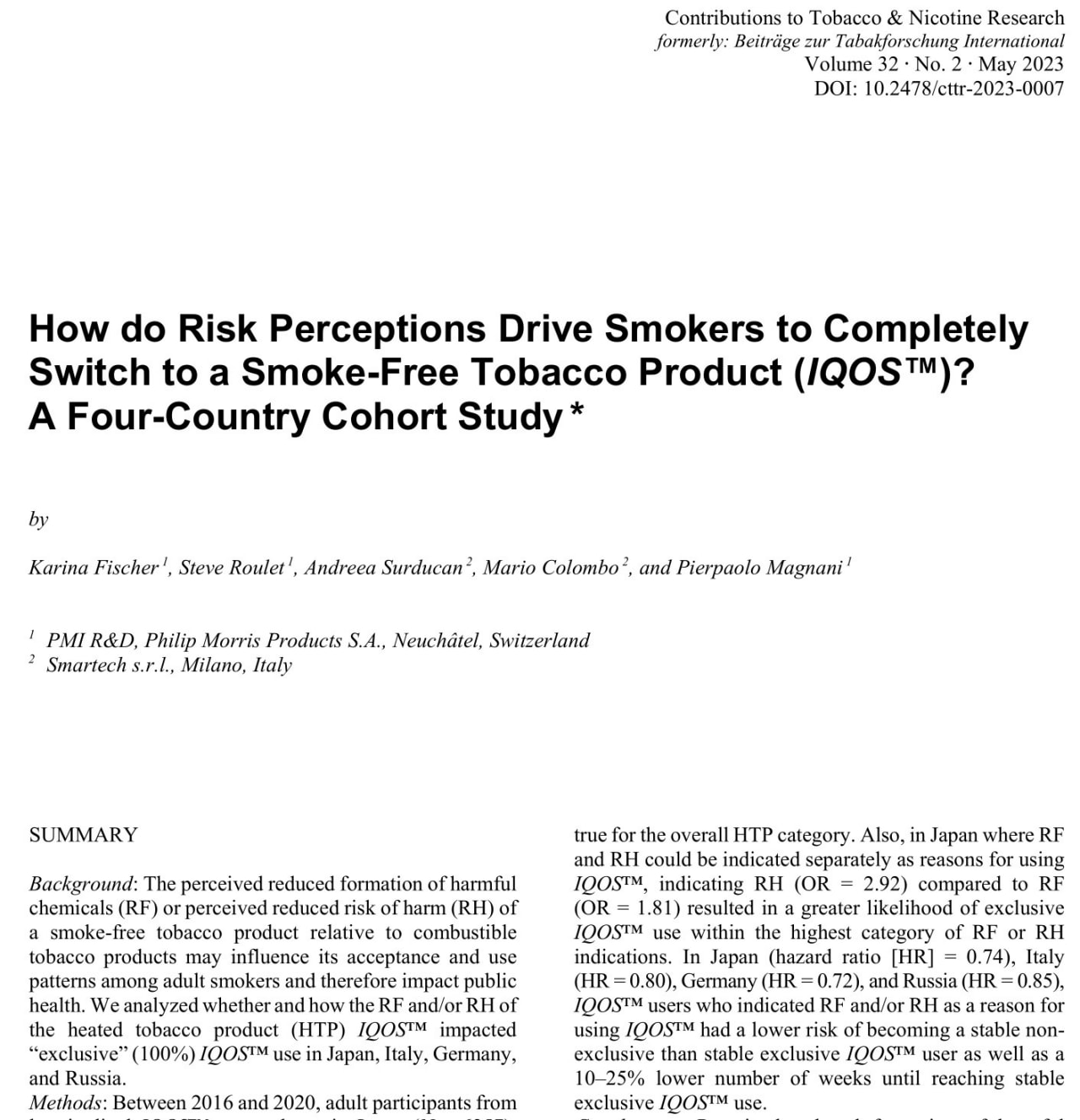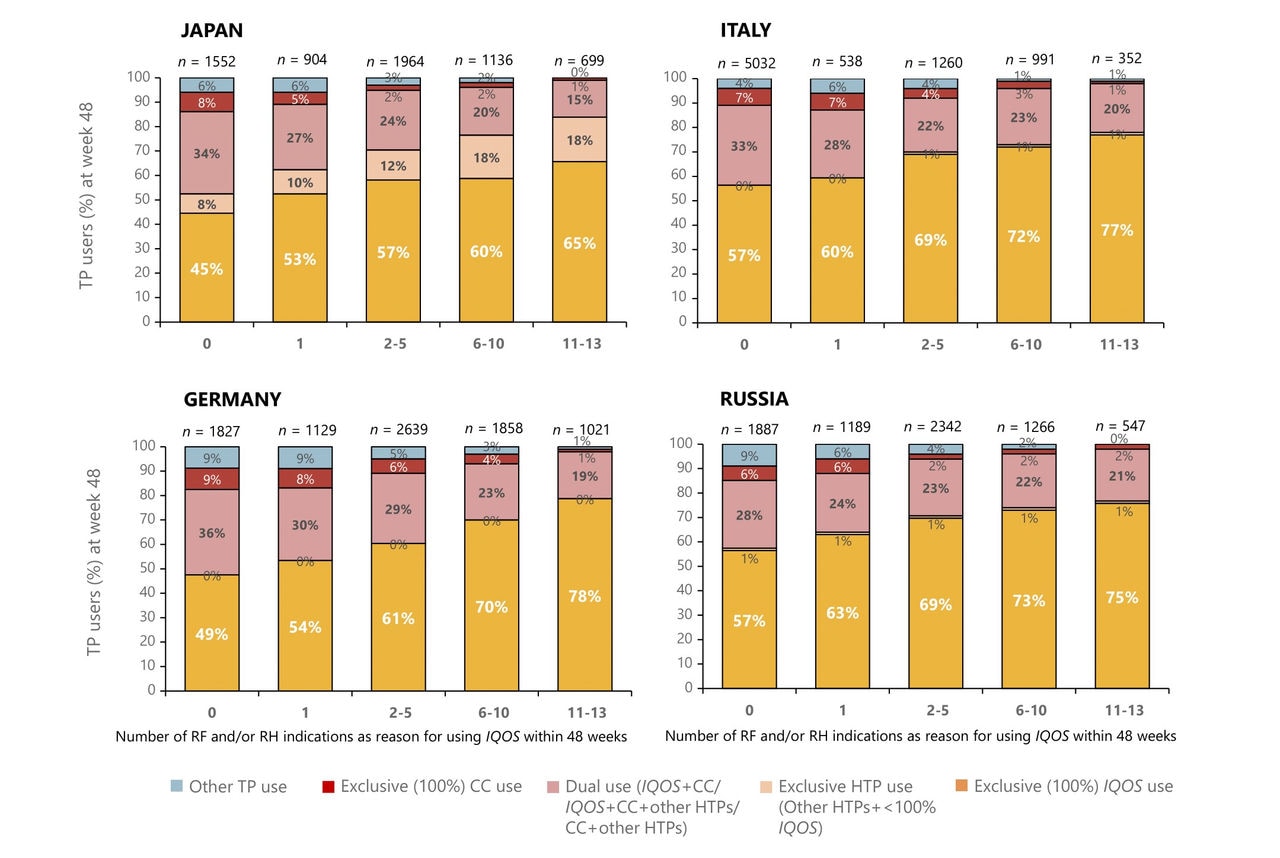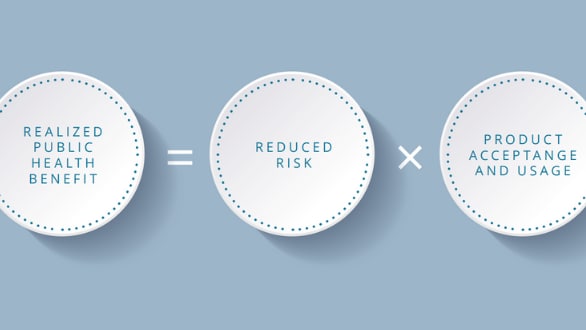Why reduced-risk information about smoke-free products is important
Several factors determine whether smokers switch completely to smoke-free products
It is a well-known fact that quitting smoking altogether is the best choice a smoker can make in the interest of their health. For those adult smokers who don’t quit, smoke-free products that don’t burn tobacco and whose reduced-risk profile has been scientifically assessed can be a better choice than continuing to smoke. The greatest effects, of course, are seen when the person switches completely, rather than if they continue to smoke cigarettes as well.
For those countries where smoke-free products are available, the aim is to encourage adult smokers who would otherwise continue smoking to instead switch to a smoke-free product. And for those who do switch, the further focus is on encouraging them to switch completely. Encouraging these choices is not necessarily straight forward. There can be multiple factors that drive switching behaviors, including different sociodemographic and motivational factors, which vary from person to person and from country to country.

The publication, titled “How do Risk Perceptions Drive Smokers to Completely Switch to a Smoke-Free Tobacco Product (IQOS™)? A Four-Country Cohort Study” by Dr. Karina Fischer et al., was published in the journal Contributions to Tobacco & Nicotine Research in June 2023. Find this and more of our research in the publications library.
Risk-related perceptions of THS encourage more complete switching among consumers
In this study, we focused on users’ perceptions about our Tobacco Heating System (THS). Specifically, we investigated whether and how consumers perceptions about the lower levels of harmful chemicals in the product’s aerosol (“reduced formation”) or the perceived reduced risk of harm of the product (“reduced risk”), impacted THS consumers’ use patterns. Further, the study was conducted in four culturally and socioeconomically different countries: Japan, Italy, Germany, and Russia.
In short, the results of this study show that consumers were more likely to switch completely from cigarettes to THS if they recognized that THS emits lower levels of harmful chemicals, or if they perceived THS as reduced risk of harm compared to continued smoking. The available literature also suggests that people consider the health risks of tobacco product use in terms of relative harm as opposed to absolute harm. These results could serve to inform tobacco control policy, regulation, and public health message approaches. They also support the need to communicate about smoke-free products and their harm and risk profiles in an accurate and credible way.
Study methods: A large-scale longitudinal survey across multiple countries
In this prospective, longitudinal, open, and online study, the study participants were adult users of THS who were at least 1 year older than the legal age for buying tobacco products in their country and had purchased their THS within the past 4 weeks prior to recruitment. This included 6,257 people in Japan, 8,137 people in Italy, 8,474 people in Germany, and 7,231 people in Russia, who were all followed up during a 48-week period between 2016 and 2020. All participants agreed to participate after they were randomly selected across different sex and age groups among the country-specific nationwide IQOSTM user databases (THS is marketed under the IQOS brand in countries where it is available).
Participants filled a questionnaire every week for the first 12 weeks, reduced to monthly after that. This survey asked the participants to select from a list of multiple reasons why they were using or not using THS. Among the list of possible reasons for using THS were statements that THS aerosol has lower levels of harmful chemicals or that it likely presents less risk of harm than cigarettes.
Statements in this questionnaire about reduced formation or reduced risk of harm were written to present information in comparison to or relative to cigarettes. This is because relative messages have been shown to be more effective in reducing harm perceptions and increasing use intentions of smoke-free products among smokers. The available data suggest that people consider the health risk of tobacco products in terms of relative harm.
The questionnaires also asked participants for information on their current tobacco product use, defined as product use within the past 7 days. Participants who used a specific kind of product, for example heated tobacco, for 100% of their total tobacco product consumption were classified as “exclusive” users of that category. Among participants who reported using THS specifically, three different classifications were defined according to how much they had used THS to a certain percentage at least during the final 4 weeks of the 48-week follow-up: stable exclusive (using THS for 100% of tobacco product consumption), stable situational (using THS for some but not all of tobacco product consumption), and stable abandoner (using no THS during the last 4-week period). Sociodemographic information was also collected, including sex, age, education, living situation, employment status, and income as part of the recruitment questionnaire.
The study was conducted in accordance with the International Chamber of Commerce/European Society for Opinion and Marketing Research (ICC/ESOMAR) International Code on Market, Opinion and Social Research and Data Analytics, the ethical principles that have their origin in the Declaration of Helsinki, and Good Epidemiological Practice.
Study results: Reduced-risk perceptions translate to more exclusive switching, consistent across countries
At the end of the 48-week follow-up period, participants who selected any of the reduced-formation or reduced-risk statements as reasons why they use THS were more likely to use THS exclusively. This trend was seen across the different countries. For descriptive data, see the breakdown between different countries in the graph below. Later follow-ups at 60 weeks and 72 weeks revealed similar trends as the 48-week follow-up.

This figure shows the patterns of tobacco product use at week 48 of the study, separated by country and the number of time the reduced-formation and/or reduced-risk statements were selected by participants. Abbreviations: CC: manufactured and hand-rolled cigarettes; TP: tobacco product; HTP: heated TP; Other TP use: participants with no TP use in the past 7 days and/or no intention to use TPs in future; RF: perceived reduced formation of harmful chemicals; RH: perceived reduced risk of harm.
Statistical analysis further revealed that participants who selected any of the reduced-formation or reduced-risk statements as reasons why they use THS were 1.4-fold up to 2.3-fold more likely to use THS exclusively at the end of the 48-week period. Selection of these statements also resulted in shortened time to reach stable exclusive use by 10% to 25% compared to participants who did not select reduced formation or reduced risk statements as reasons for using THS. These trends were consistent across all four countries included in this study.
Because this is a longitudinal study, cause and effect relationships can be inferred from the data and analysis. Selection of participants from different subsets of the population in the four countries allowed for good representativeness and equal distribution of confounding variables among subgroups. Also, the large sample sizes ensure statistical power and accuracy of the results, while the standardized assessment across four culturally and socioeconomically different countries allowed for comparability and greater generalizability of results.
Limitations of this study include possible sampling and selection biases. Further, the reduced-formation and reduced-risk statements available for the participants to select from were not the same across the countries. Participants also may not have recognized that there is a difference between the reduced-formation and the reduced-risk statements, which is why the data on differences between response to these two kinds of statements should be interpreted with caution.
Conclusions: Communicating risk-related information to consumers can help them switch completely to better products
In summary, consumers of THS who identified reduced formation of harmful chemicals or perceived reduced risk of harm of THS as reasons for use were significantly more likely to switch to exclusive THS use and to do so more quickly than those who did not select these statements. This trend also appears to be true for the overall heated tobacco product category. Further, reduced-risk perceptions may be a stronger driver of complete switching than reduced formation. These findings suggest that the perceptions of the harm of heated tobacco products and possibly of other smoke-free tobacco products play an important role in tobacco harm reduction because they facilitate and accelerate adult smokers’ complete and permanent switching to less harmful smoke-free products.
What’s more, an earlier study, also conducted by PMI, revealed that the perceived difference between THS and cigarettes in terms of risk has declined over time, especially in Japan and Italy. This was driven mainly by an increase in the risk perception of THS, rather than a decrease in the risk perception of cigarettes. Considering the impact that risk perceptions can have on the likelihood of complete switching as shown in the research described in this article, it is important to communicate accurate, balanced, and credible information on the relative risk of smoke-free products compared with cigarettes, as well as the absolute risk of continued smoking.

Read the Scientific Update magazine
The Scientific Update magazine is focused on PMI's research and development efforts, milestone studies, industry regulations, and more. View the latest issue, or read the articles online.





